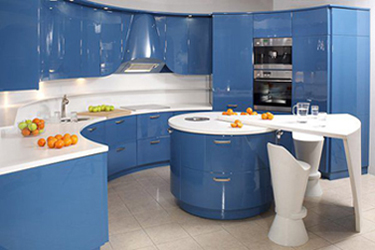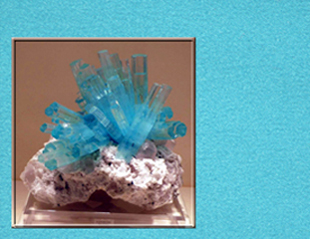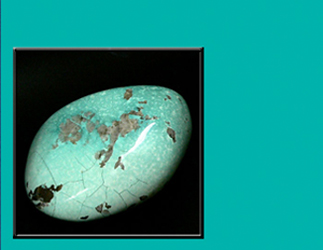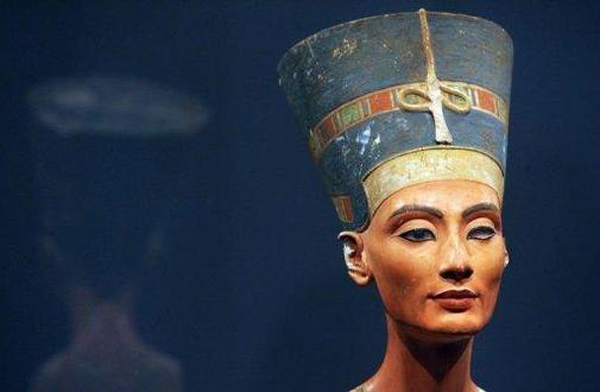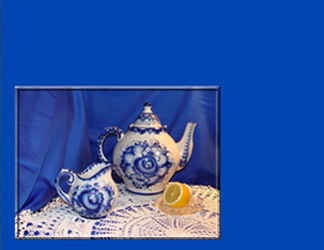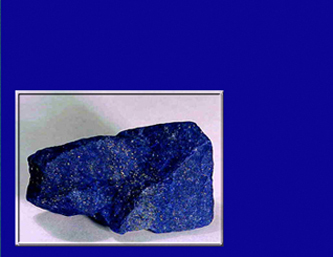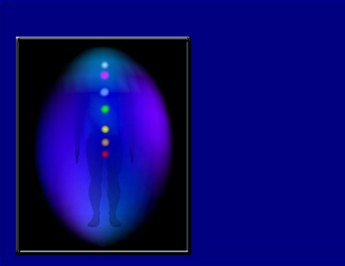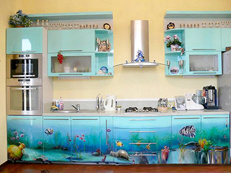You can talk about red color endlessly. Firstly, it turns out that the red color of men and women perceive completely differently. It is no coincidence that for many years people have been walking a joke that a man does not recognize either the “color of the frightened nymph” or the “color of the sea wave”. This does not happen at all because of the callousness and inattention of the stronger sex, but because the range of shades perceived by the male brain is much smaller than the female. It directly depends on DNA. The fact is that the special gene responsible for the interpretation of red is located on the X chromosome, and, as you know, in women, unlike men, there is one more X chromosome. This state of affairs allows a woman to capture absolutely all shades of red.
In the era of black-and-white television, red filters were often used in cameras, because of which red lipstick made lips on TV screens faint. Therefore, the announcer and actresses made up with green blush and lipstick.

The prohibiting red traffic light is not at all accidental. There is such a thing as Rayleigh dispersion. Our eye sees scattered waves - from red (longwave) to purple or blue (shortwave). In this case, short waves when passing through atmospheric air are scattered more than long ones. This pattern is especially important in bad weather - in fog or rain. Red is perceived by a person faster and more clearly due to its physical parameters and due to the length of the light wave. Simply put, red from a distance can be seen much better than, say, blue or purple.
By the way, according to statistics, red cars more often than others get into accidents. Red color excites and actively affects the nervous system, respectively, and the driving style becomes much more aggressive. The main danger for owners of red cars is cars of the same color: due to the unusual superposition of speed and color, the illusion is created that another driver is going to “cut you”. The higher the speed, the stronger the optical illusion.
Blue is the warmest color

Studies show that blue is the most favorite color in the world. It is preferred by 40% of the world's population. Such a choice can hardly be called random. Blue is not annoying, from contemplation of the indigo color, according to experts, the nervous system comes into full order. Once, in the Japanese city of Nara, scientists, teaming up with the police, conducted an exciting experiment: in the most criminal neighborhoods of the city, the yellow lights were replaced with blue, the same thing was done at the railway station, where suicides were often committed. Surprisingly, the crime rate in record time in disadvantaged areas has decreased by 9%, and at the railway station in the past two years not a single suicide has occurred.
Beyond the calm that conditions blue color, it also activates the brain. And scientists from the University of Canada have found that blue contributes to creative thinking.
It is all the more surprising that in ancient Rome, according to historians, the blue color was not liked because the barbarians with whom the Romans permanently fought, as a rule, painted bodies in blue color for intimidation.
Yellow color - joy and appetite

If you want to lose weight and just went on a diet - do not rush to repaint the kitchen walls yellow. Often in restaurants and cafes they use furniture or decor of bright yellow color, and all because yellow and orange colors evoke appetite. A number of special studies have proved that it is precisely this color scheme that contributes to the production of gastric juice, and besides, in warm “highlighting” products seem more attractive.
Of the entire spectrum of colors, yellow is the lightest, shining color, due to this peculiarity it attracts a lot of attention, and other colors in combination with yellow are better perceived by the eye, and a bright yellow marker is considered the first in the world in popularity.

However, not all shades of yellow are so positive, since the old dirty yellow was considered the color of despondency and grief, that is why often the walls in psychiatric hospitals were painted exactly in this shade, and in ancient times the yellow was generally considered the color of betrayal - Judas was most often depicted in yellow robes.
Yes, orange, traditionally considered to be another color of positive, causes quite different associations among Americans - the fact is that the prison form in the USA is orange. However, there is no particular subtext here - just the orange color, just like red, is clearly visible from afar, so it’s not at all difficult for the guards to shoot to kill the escaped prisoners.
Pink sedative

Our emotional response to color is incredibly strong. The perception of color depends on the physiological characteristics of your eyes and on the state of the nervous system, on life experience and the environment. We all know the common expression that optimists look at the world through pink glasses. In part, this statement is true. As scientists have found out, pink has the most beneficial effect on our nervous system, even stronger than blue. Contemplation of pink dulls uncontrollable anger and physical aggression so much that this color is actively used in correctional institutions and schools for difficult children in order to prevent asocial behavior and reduce suicide attempts. So, if it was a hard day at work, buy yourself a pink dress or handbag, or better, both.
In a state prison in Georgia, the entire inside of the men's unit is pink and the prisoners are pink. According to the head of the prison, after this innovation in prison, there were significantly fewer conflicts among prisoners. The female part of the prison was painted in lemon green, however, it is not reported whether there is the same effect from it.
Chromatophobia - fear of color

Such a disease does exist. Some people with this disorder have a strong reaction to certain shades, while others generally try to avoid certain colors. Affected chromatophobia experiences symptoms such as nausea, dizziness, shortness of breath, feelings of panic, increased heart rate and blood pressure, anxiety, headache and trembling. However, modern psychiatry can cope with this disease, unlike many others.
Our universe also has color
Astronomers are extremely romantic people. Scientists who enthusiastically study the cosmos claim that the universe has its own color. In order to determine the same shade in 2001, scientists from Johns Hopkins University averaged the colors of 200,000 galaxies and got a beige-white color, which was called Space Coffee with Milk.
Scientists have identified the most unpleasant color
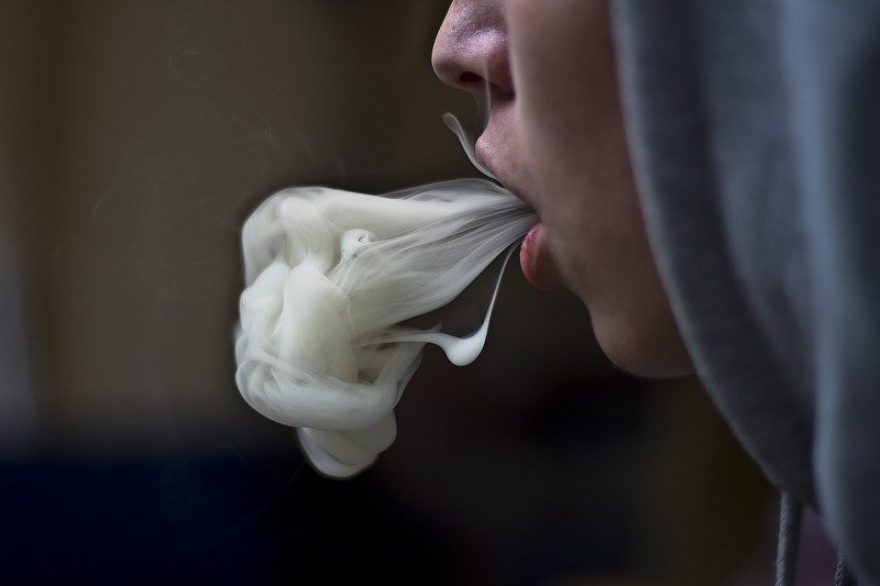
If there is the most attractive color for most people - blue, then surely there is the most nasty. Australian scientists decided to find the answer to this question. And they found. The sought-after color according to the international classification is called Pantone 448C, and it looks like a mixture of marsh slurry and excrement. Research has been conducted for a reason - with the help of the most disgusting color, the Australian authorities are going to fight smoking. How? The use of Pantone 448C colors in cigarette packs leads to a progressive decline in sales of these products. The experience of overseas neighbors is also about to be taken over by some European countries. Although, in fact - the question is solely in personal preferences, for some, the unfortunate Pantone 448C may seem very pretty.
The strangest color names

For an appetizer, we offer you to enjoy the most non-trivial names of various shades: for example, in addition to the color of the frightened nymph's thigh, there is also the color of a frightened mouse and a toad in love, juicy pink is called the color of the Judas tree, and close to our beloved coral, it’s partridge eyes. A particularly touching name is the color of Parisian mud, which, incidentally, is quite true, the color of a spider plotting a crime (it looks very much like a frightened mouse) and the last breath of a jaco (apparently this is a parrot).
1. A bull on a bullfight attacks a red cloak of a matador, which is called a mulelet, not at all because it is annoying red - because cows do not distinguish colors. In fact, the bull reacts to movement when the torero swings the mulelet. And the red color has historically been chosen to make the blood of the bull less noticeable.
2. The flight recorder, which is installed on airplanes to record information about the technical condition of all devices, as well as crew actions and conversations, is often called the “black box”. Although in reality this device does not have the form of a box, but a ball or cylinder, and its color is not black, but red or orange, so that it is easier to find in case of an accident.
3. The concept of “white noise” is widely known - this is what they say about a signal with a uniform spectral density at all frequencies and a dispersion equal to infinity. An example of white noise is the sound of a waterfall. However, in addition to white emit a large number of other color noise. Pink noise is a signal in which the density is inversely proportional to the frequency, and for red noise, the density is inversely proportional to the square of the frequency - they are perceived more “warm” by ear than white. There are also concepts of blue, purple, gray noise and many others.
4. The short-wave components of the solar spectrum are scattered in the air more strongly than the long-wave ones. That is why we see the sky blue - because the blue color is at the short-wave end of the visible spectrum. For a similar reason, during sunset or sunrise, the sky on the horizon turns red. At this time, the light travels tangentially to the earth's surface, and its path in the atmosphere is much longer, as a result of which a significant part of the blue and green color leaves direct sunlight due to scattering.
5. Many people believe that a zebra is a white horse in a black stripe, since zebras have white bellies. However, studies of zebras at the embryonic stage show that the background color of the animal is precisely black, therefore it is more correct to consider a zebra as black in a white stripe.
6. Earlier in Scotland, there was a color differentiation of kilts. Depending on his dignity, a person had the right to wear a kilt with a limited set of colored stripes in the fabric. For example, the six-color kilt was the king's exclusive privilege. Also, a set of flowers in a kilt made it possible to judge where a person came from, since weavers had a limited choice of plants for a given area from which it was possible to get paint.
7. An analogue of the Russian expression "white crow" in many European languages \u200b\u200bis the idiom "black sheep". Although if we call the black sheep just an exceptional member of society, then, calling a person a black sheep, Europeans also hint at the undesirability of finding such a member in society. In this sense, the idiom is moving closer to another Russian expression - “black sheep”.
8. The facades of the Gothic cathedrals during their construction in the Middle Ages were not necessarily as gray and austere as we see them now. When the Amiens Cathedral in France underwent laser cleaning in the 1990s, it was discovered that the facade was painted in a variety of bright colors centuries ago. Now this cathedral on holidays is highlighted with the same colors as it was in the 13th century.
9. In a state prison in Georgia, the entire inside of the men's unit is pink and the prisoners are pink. According to the head of the prison, after this innovation in prison, there were significantly fewer conflicts among prisoners. The female part of the prison was painted in lemon green, however, it is not reported whether there is the same effect from it.
10. In 1668, Tsar Alexei Mikhailovich instructed the Dutch engineer David Butler to build the Eagle ship, which became the first in the history of the Russian Navy. At the end of construction, the question arose - which flag to fly on the ship, because our country did not have it then. The tsar ordered to ask Butler for advice, and he answered that a tricolor flag with a red, white and blue stripe was hoisted in his homeland (it has been preserved in the Netherlands to this day). For our ship they took the same colors, only changed the order of the stripes to white, blue and red. By the way, today there is no official interpretation of the colors of the Russian flag.
11. Brown is now strictly associated with Nazism. Although he was chosen by the Nazis not specifically, but for a completely prosaic reason. When Germany lost its African colonies after the First World War, a large quantity of brown uniforms (especially for African landscapes) remained in the warehouses. The National Socialist Party also acquired this uniform at a low price for its assault squads.
12. Billiards came from games with a stick and balls in the open air and is somewhat related to golf and croquet. Therefore, in tribute to tradition, the cloth on most billiard tables is green, like the color of grass.
13. Many of us use toothpaste from several strips (for example, red, white and blue). However, why do the stripes remain even and the colors do not mix? For this, a special tube is used, patented in the USA in the late 1950s. The neck of such a tube is an elongated tube that ends at the filling level of the white paste base. Closer to the neck in this tube there are small holes through which colored fillers come.
14. The Spanish royal family and the nobility took pride in the fact that, unlike the common people, they trace their pedigree from the West Goths and never mix with the Moors who entered Spain from Africa. Unlike dark-skinned commoners, the blue veins stood out on the pale skin of the upper class, and therefore they called themselves sangre azul, which means "blue blood". Hence, this expression for the designation of the aristocracy penetrated many European languages, including Russian.
15. The flag of the Philippines consists of a white triangle in which the sun and stars are enclosed, and two stripes - blue and red. This is the only state flag that has two equal options: in peacetime, the blue stripe above and the red stripe below, and when the Philippines is at war, then vice versa.
16. The assertion that the human brain perceives a color decomposed into red ®, green (G) and blue (B) components is incorrect. In fact, the brain receives information about the difference in brightness between white and black, between green and red, as well as between blue and yellow. This explains the phenomenon that people perceive the color of objects in different light sources in the same way.
17. In the era of black-and-white television, red filters were often used in cameras, because of which red lipstick made lips on TV screens faint. Therefore, the announcer and actresses made up with green blush and lipstick.
18. Initially, in Japanese, there was no difference between blue and green, and one word was used to designate them - aoi. To distinguish between blue and green in educational materials began only in the middle of the 20th century, but even today the word aoi can denote the color of vegetation. And in many other Asian languages, even if there are separate words for these flowers, natural objects, such as leaves, are indicated by blue, and only man-made green objects are actually green.
19. Blue eye color is the result of a mutation in the HERC2 gene, due to which the carriers of this gene have reduced melanin production in the iris of the eye. This mutation occurred about 6–10 thousand years ago in the northwestern part of the Black Sea coast, so that all people with blue eyes can be considered relatives.
20. For a long time it was believed that ancient Greek sculptures made of white marble were originally colorless. However, recent studies by scientists have confirmed the hypothesis that the statues were painted in a wide range of colors, which eventually disappeared under prolonged exposure to light and air.
21. Although the multi-color spectrum of the rainbow is continuous, according to tradition, 7 colors are distinguished in it. It is believed that Isaac Newton was the first to choose this number. Moreover, he initially distinguished only five colors - red, yellow, green, blue and violet, which he wrote about in his Optics. But subsequently, in an effort to create a correspondence between the number of colors in the spectrum and the number of basic tones of the musical scale, Newton added two more colors.
22. Dalmatian puppies are born completely white.
23. The pink color of flamingos was not given to them from birth, but comes from the small red crustaceans or algae that are eaten, which contain a carotenoid.
1) Human eye most clearly distinguishes shades of green.
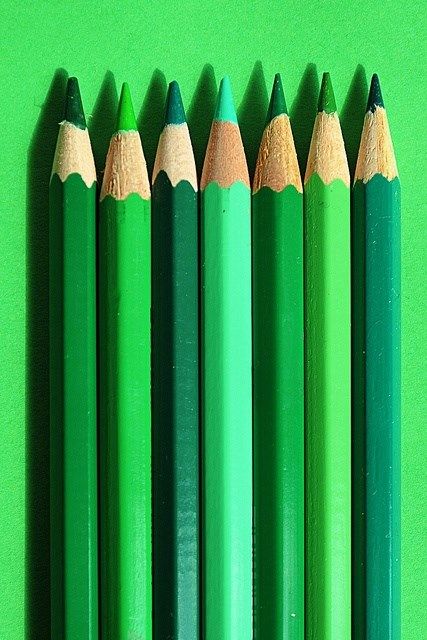


3) Accordingly, the fact that complementary to green - red is just a common misconception . Green and red together create the so-called "color contrast" - a dynamic unstable combination different colors. But green and purple (violet with a red admixture) - this is just the real complementary combination - where colors reinforce each other and create a stable, stable picture. In general, with truly complementary combinations there is a balance, a counterbalance, there is no dynamism and incompleteness.




4) In the language, green also left its mark. At first, in many languages, green and blue-green (or even blue with them) are one color . Why this happens - you can read here:. Yes, and individual people do not have the category of "blue-green" in their heads - it is simplified to "blue", "green", or even to "blue".


5) Since green is associated with a new shoot, in many languages \u200b\u200bit means young and immature.
Sometimes with an extra meaning of inexperience. In Russian, this expression is "young - green." 

6) In a word "green room"
(literally - "green room" - apparently an association with the relaxing properties of green) is often called a place to relax in the theater, cinema and for actors and singers awaiting performance. 
7) negative green associations in some languages \u200b\u200bare associated with envy (green with envy), and in some - with longing and stagnation (mossiness, swamping) (turned green with longing, longing green).
8) In Chinese slang "wear a green hat" means about the same thing as "walking with set horns" in Russian \u003d) That is, a situation where a person is cheated.
the article used the projects of the contest "Kitchen for Sagittarius"
It is difficult for our contemporary to imagine that the blue color appeared in humanity relatively recently. This phenomenon seems especially strange to us, since blue is widely represented in nature. Since childhood, we have loved blue wildflowers - cornflower and periwinkle, which are shrouded in fairy tales and legends.
Periwinkle is a cute blue flower .... For centuries on his wreaths they had been guessing about marriage ... He was known as a means for the "recognition" of witches. Medieval inquisitors, exposing the victim in an intercourse with evil spirits, threw up vinca leaves on a hot pan: if the leaf bounced away, then the victim indulged in a fire. Later black superstitions gave way to good omens. According to legend, who will plant periwinkles at home will wait for happiness. Like fragrant violet, it is the first to open in spring. No wonder it is called the flower of love and passion. In the palette of shades of blue, this color is called - periwinkle.
A cornflower ... everyone's favorite flower? We are sure that this is a resident of exclusively Russian fields and meadows. But did you know that during the excavations a wreath of cornflowers was found in the sarcophagus of the tomb of Tutankhamun. Interestingly, these cornflowers have retained their color and shape, although they have dried up. In the color palette, this color is called cornflower blue.
Despite the fact that blue surrounds us literally in the literal sense of the word - from the water surface to the deep sky - it took a lot of time and work for humanity to learn how to make blue dye for its needs. Historians convey to us the fact that in the first images of mankind (the Late Paleolithic era) this color is completely absent.
Among the rock paintings that have come down to our time, we can see all kinds of shades of red, yellow, more or less brightness and saturation, black, but there is no blue in sight. And when in the Neolithic people mastered the technique of coloring objects, they primarily began to use red and yellow clay - natural dyes, while the blue color had to wait for its turn. His path to people was thorny and long.
A striking fact - the ancients painted water exclusively in green, and for the sky they had no color at all. Is it not an echo of the past that blue shades of cyan and aquamarine gravitate towards the green sector of the color wheel of our time, in the name of which there is a motive of the sea, that is, water?
Aquamarine - the soul of the sea, the unity of air and water - that's what it is called. He owes this name to the stone of the same name. It stores an endless stream of water energy that stores the knowledge of the universe. According to the mystics, this shade of color allows you to maintain a great mental activity. Under its influence, the creative and rational activity of the brain combines, allowing you to maintain high performance, combined with a general peaceful state.
“Turquoise” is closest to green in this respect. The turquoise stone, from which the name of the color came from, is considered the mascot of Sagittarius. The Russian etymology of the word is rooted in the Persian “Firuza”, i.e. "Victorious, bringing happiness." According to psychologists, this color relaxes, helps to focus and cope with negative thoughts, creates a feeling of harmony with the environment and with oneself.
The color of the sea wave is darker than turquoise and to a large extent casts blue or gray. Scientifically, it is called cyan. Like the ocean, this color gives the impression of a large space, comfort, tranquility and silence. Settles for pacification and disposes to meditation.
Due to the fact that the blue color was not mentioned in historical documents until the 5th century BC, for a very long time there was a hypothesis that the human brain began to distinguish blue much later than other colors, gradually developing. Most likely, this hypothesis was based on the results of studies of color perception by infants.
The following fact from our physiology is curious. The child begins to distinguish colors almost from birth. The primacy here is yellow. It is his baby who recognizes first. A little later, red and orange are added. This circumstance is due to the fact that the rattles are dominated by yellow, red and orange colors. This is directly related to the color vision of infants. But the baby begins to recognize the blue color only by 6 months.
Modern scientists refute the hypothesis of the "underdeveloped brain" of the ancients, since it is believed that the human brain has not changed since the Paleolithic era. The absence of blue in the way of ancient people is most likely due to the fact that natural blue dyes were discovered much later than other paints. But one thing is for sure - the attitude towards the blue color fluctuated like a pendulum from bad to prestigious, not only depending on nationality, but also in the history of the same people at different times.
For example, in ancient Rome, the attitude towards blue was sharply negative, and blue-eyed and blond people were considered almost freaks. This attitude is connected not so much with the aesthetic perception of the blue by the Romans, but with the fact that the barbarians with whom they fought were blue-eyed blondes. That is, the color carried the image of the enemy and contempt.
The symbolism of blue has an interesting and even dramatic content in Russian history. Ivan the Terrible was panicky afraid of people with blue eyes, believing that such a person has great magical power and can jinx it. And now, judging by the popular program “Battle of psychics”, on the contrary. It is believed that a person who can jinx has not blue, but dark eyes. Is this not the legacy of the Tatar-Mongol yoke?
At the beginning of the 19th century, in Russia there was a general tendency to call any color with a shade of blue the general name “strange colors”. They were popular in wealthy circles, but met with a negative reaction among the people.
But be that as it may, by the beginning of the era of civilizations, mankind, according to scientists, highlighted the blue color in a separate and he had fans.
Especially appreciated the blue color in ancient Egypt. Today, archaeologists have reliably established that already in 4500 BC the Egyptians used blue dye to stain the fabrics in which they wrapped the mummies of the nobility. The interiors of the temples were decorated in blue. Priests wore blue bibs, which symbolized the holiness of their occupations. And the pharaohs put on a blue leather crown, symbolizing their superiority and divine origin. Queen Nefertiti, probably the most familiar to us, with the exception of the pyramids, the image of ancient Egypt, was usually depicted in a blue tiara.
Historically, blue is the dominant color. In psychology, it is traditionally considered the color of self-confident, determined and purposeful people. In connection with such an assessment by psychologists of blue, the fact is interesting that predations are afraid of everything that is painted in blue.
With the passage of time and the search for new dyes, shades of blue began to appear that entered the modern palette of the blue spectrum. If in the 14th century the vocabulary of European languages \u200b\u200bwas relatively poor in definitions related to light blue tones, then in the middle of the 18th century their number increased sharply. This fact is confirmed by dictionaries, encyclopedias and dyeing manuals. For example, in French in 1765 there were twenty-four common words for blue tones resulting from dyeing. A century earlier, there were thirteen such words.
Blue, azure, cobalt, blue, ultramarine and sapphire are located in the center of the blue sector.
Azure is the color of the sky on a clear day. It appeared in the official palette in the 19th century and is associated with the name of Andreas Hepfner. This color is most loved by romantics - poets and artists. Perhaps that is why in the Russian dictionary of synonyms, in addition to sky blue, you can also read such azure synonyms as "unrealizable" and "idyllic."
Cobalt is a color that is familiar to each of us in luxurious tea sets. And also, if anyone does not know, then this is the signature color of the Gzhel painting. Since the 17th century, various grades of clay have been mined in Gzhel; they are engaged in the manufacture of various ceramic and earthenware products. Romantic landscapes, delicate blue flowers, mysterious blue birds ... Traditionally, Gzhel painting was specifically on a plant and animal theme. Already at the beginning of the 19th century, the tradition of painting Gzhel with exclusively blue paint appeared. And at the end of the XIX century, Gzhel craftsmen began to use exclusively cobalt and gold strokes as blue paint in the decoration, which became their corporate identity and has survived unchanged to this day.
The rarest of the blue palette is ultramarine, which was obtained from lapis powder. He was worth its weight in gold. Only in the 19th century did they find a way to obtain artificial dye. Natural ultramarine is now even more expensive than in antiquity, and therefore is used today only in artistic watercolor and oil painting.
Sapphire is a deep shade of blue, named after the gem of the same name. The influence of this color is inseparable from the mysticism of stone. Following Mayakovsky we can say: “We say sapphire, we mean sapphire color; we say sapphire color, we mean sapphire. " According to one version, the name "sapphire" comes from the ancient Indian canipriya, which means "beloved Saturn." In ancient Persia, it was believed that the earth rested on a huge sapphire and the blue sky was its reflection.
The previously mentioned shades of blue - periwinkle and cornflower blue, as well as indigo gravitate already to the purple sector of the color wheel.
Indigo is the color of mystics. Tantrism says that the color of indigo brings harmony and wisdom of interaction with the outside world. In nature, this color is very rare. And if, when illustrating the previous colors, we found their natural counterparts, then for the indigo color they could not be found. Even the flower of indigoferra, from which this dye is obtained, has a pink tint.
A new expensive, but high-quality indigo dye began to enter the European markets during the Renaissance after Marco Polo's voyage to India. A halo of mysticism immediately arose around him, since the process of its production was a great secret. In Europe, it was rumored that indigo is extracted from rare aluzen fish, thereby substantiating the high price. In connection with this circumstance, the following historical fact is interesting. Defending the interests of the local producer of German power, they issued a decree declaring indigo "devilish paint." And since Germany has historically been the main supplier to Russia of new technologies and goods from the West, this left a negative imprint on the Russians of that century to blue.
And in the modern world, indigo can be called the most mystical shade of blue. It is enough to recall such concepts that have firmly entered our lives, such as “indigo children”, “indigo aura”, etc.
To date, there are more than thirty official tones and shades of blue used in industry alone! Blue has become a universal favorite. According to opinion polls conducted after the Second World War, both in Western Europe and in America, in response to a question about their favorite color, fifty out of a hundred people call blue the first. Followed by green (about 20% of respondents), then white and red (8% each). These colors are far ahead of everyone else.
Blue has become the most peaceful, most neutral of colors. It has been associated with peace and quiet since the Middle Ages and the era of romanticism. Later it became associated with water, and only very recently there was a connection between blue and cold. It personifies in our time purity, innocence, mysticism, prestige, masculinity ...
Despite the abundance of shades of blue, all of them, based on their characteristics and human exposure, are inherent in people born under the sign of Sagittarius. Sagittarius is Fire in the third zone in which the elements of the Earth appear. The symbol of Sagittarius is a Centaur with a bow and arrow, the tip of which is directed upward towards a new, higher, spiritual one. This is due to the fact that astrologers consider blue the color of Sagittarius. It creates a sense of infinity and space for them, awakens inner strength, gives confidence to gestures, and balance to actions. These are the qualities that distinguish Sagittarius from other signs of the zodiac. Blue shades - cosmic and contemplative - involve Sagittarius into the bottomless depths of other worlds, create a sense of inner support and solemnity. From time to time, blue shades add to their mood notes of meditation and melancholy, in which peace and sadness, tenderness and crystal freshness are enclosed.
You can see the full selection of kitchens in blue tones in Odnoklassniki in the Mr. Kitchen group. The album "Kitchen for Sagittarius" http://www.odnoklassniki.ru/misterkuhna/album/52169782263873
The best projects of the Constellations contests are collected in the album "Star Collection" http://www.odnoklassniki.ru/misterkuhna/album/52169332949057 All these projects can be made at the Elite-Grand factory - http://elit-grand.ru/, tel . 8-945-518-59-10
Show your favorite kitchen photo from any album to our manager, and we will produce it for you in the color you need, adapting the project to the room and budget - http://elit-grand.ru/, tel. 8-945-518-59-10
Did you know that there is a whole science of color? It is called colorimetry. This science deals with everything related to color: from measurement methods and color theory in art to electromagnetic radiation and the physiology of color perception with our eyes.
But enough terms! Are you ready to learn something interesting? The average person distinguishes about a million flowers. However, there is a condition under which some women can see almost 100 million flowers! Yes, exactly that much! They see 100 times more colors than the average person. So the next time your wife will argue with you about the color of your shoes, you will know why.
And one more curious fact: did you know that night vision devices are usually green, because our eyes can see more shades of green than any other color?
Here are 25 amazing facts about colors that you never knew existed!
25. The sun is actually white and shines with white light, if you look at it from space. Just when the sunlight passes through the Earth’s atmosphere, it takes on a yellow hue.

24. “Impossible” colors, also called “forbidden” colors, are colors that are too complex for the human eye. We cannot see them because of the principles of perception and processing of colors in the brain, which do not allow us to distinguish between certain shades. Try to imagine yellow-blue or red-green color, and you will see that we can not only see them, but also imagine them.

23. Most people see colorful dreams, but those who grew up in the era of black and white cinema are more likely to see black and white dreams.
According to a 2008 study by scientists at the Scottish University of Dundee, adults older than 55 who grew up during black and white television often have black and white dreams, while younger participants who grew up in the era of color cinema and television almost always have colorful dreams. The same results were shown by studies conducted in 2011 by the American Psychological Association.
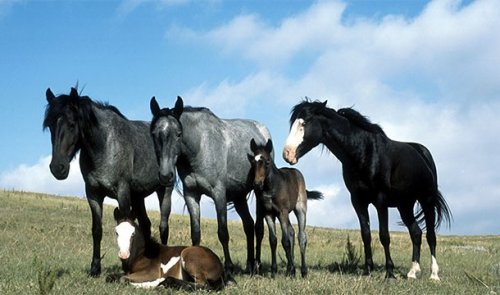
22. Horses have the largest eyes of all land animals. And they, by the way, see perfectly at night. True, unfortunately, they have dichromatic (two-color) vision, which means that they can see only two of the three primary colors.

21. People who do not distinguish colors (suffering from color blindness) tend to see better in the dark.

20. German Formula 1 race cars first became silver in 1934. Is it a legend or a reality, but, they say, when the designers prepared their racing cars for the upcoming races, they apparently did not take into account something, and during the inspection the day before the start of the competition it turned out that the German race cars weigh one kilogram more than the permissible norm.
The team could not be allowed to race, so the enterprising head of the Mercedes-Benz team ordered to clean the cars from the recently applied paint right down to bare metal, which was done by the mechanics the night before the start. By the way, one of the Mercedes cars then won the race. The color remained silver, and the Mercedes-Benz team has since been called the Silver Arrows.

19. Night vision goggles use green phosphor, because the human eye is able to distinguish more shades of green than any other color.
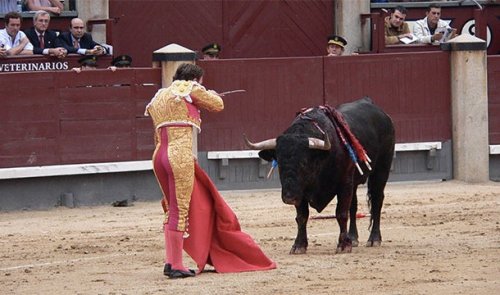
18. The matador’s cloak does not have to be red, because the bulls do not distinguish colors. They say that a red cloak is needed in order to hide drops of blood from the audience (when the bull is killed).
![]()
17. Israeli professor of chemistry Fernando Patolsky (Fernando Patolsky) from Tel Aviv University created a "straw from rape." This is a small device that looks like a regular straw for stirring a drink, which is equipped with a sensor that mixes a drop of the drink with the test solution. As a result of a chemical reaction, the drink becomes cloudy or its color changes (depending on the preparation used).
As you know, attackers add the so-called rape drugs to the drinks of their victims, because of which they become more calm and even briefly lose their memory.

16. Markers are usually yellow, because they do not leave traces (do not obscure the selected areas) on photocopies.

15. The United States uses people with color blindness to recognize camouflage. This is because they perceive certain colors in a way that people with normal vision are not capable of.

14. According to studies, red-haired people during surgery may require 20% more anesthesia than holders of a different hair color.

13. In the Middle Ages, fabric dyes dyed the material either red or blue. Each of these two groups had their own guilds, which forbade their members to dye fabric in opposite colortherefore, purple clothes were rare at the time.

12. Cheddar cheese is only ivory or yellowish, because it is stained with the natural dye of annatto. In fact, its color changes depending on the time of year and the diet of cows whose milk was used for its production. Farmers began to tint cheese to avoid color variations of cheese.

11. In the 1980s, scientists demonstrated that the enzyme contained in green coffee beans can change the blood of any group into the blood of group 0, whose owners are considered universal donors.

10. The colors of fire hydrants can be used to determine water flow and pressure.

9. In 1962, the “solid” color of the Crayola wax crayon was renamed “peach”.

8. The colored dots on carbonated beverage cans located near the nutrient information are the colors that were used in the production. Thanks to this, the company can identify a defective printer and fix problems with it if one of the dots faded or is missing.

7. Upon retiring, Emerson Moser, the main creator of Crayola's wax crayons, admitted that he doesn’t really distinguish colors (ie color blind).

6. The fake blood on the set of Sweeney Todd, the demon barber of Fleet Street was orange due to the panic fear Johnny Depp feels at the sight of blood. Then she was given the desired color on the computer.

5. Beginning in the 1890s, simple pencils began to be painted yellow. All because graphite for their production came from China, and in China, yellow was considered the color of the royal dynasty. Thus, manufacturers of pencils made it clear that they contain high-quality Chinese graphite. Since then, they have remained yellow.
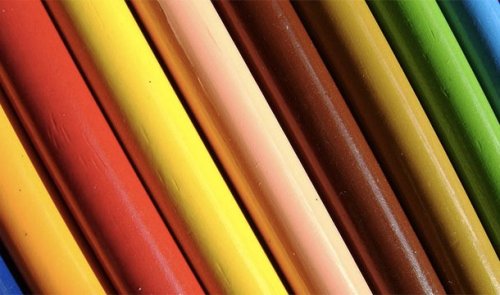
4. Some women are tetrachromatic. This means that they can perceive approximately 100 times more colors than ordinary people perceive.

3. When UPS launched its operations in Germany in 1976, UPS didn’t like the locals because the brown shirts of the company's employees caused them unpleasant associations with the Nazis. UPS changed the shirts brown to green.

2. The following is an excerpt from a 1918 industry magazine (when pink was still considered boyish and blue was a girl’s): “The generally accepted rule is pink for boys and blue for girls. The reason is pink, being a more determined and strong color is more suitable for boys, while the blue color, which is more refined and graceful, looks better on girls. "
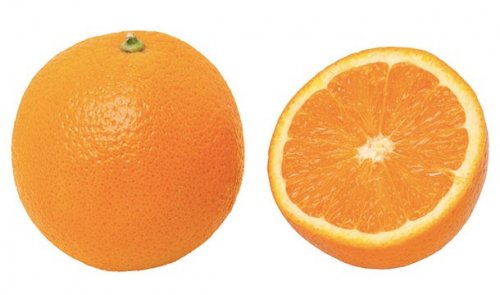
1. Orange was named after the orange ("orange" in English). Prior to this, this color on english language was called "geoluread", which translates as "yellow red." However, you already know about this from our






